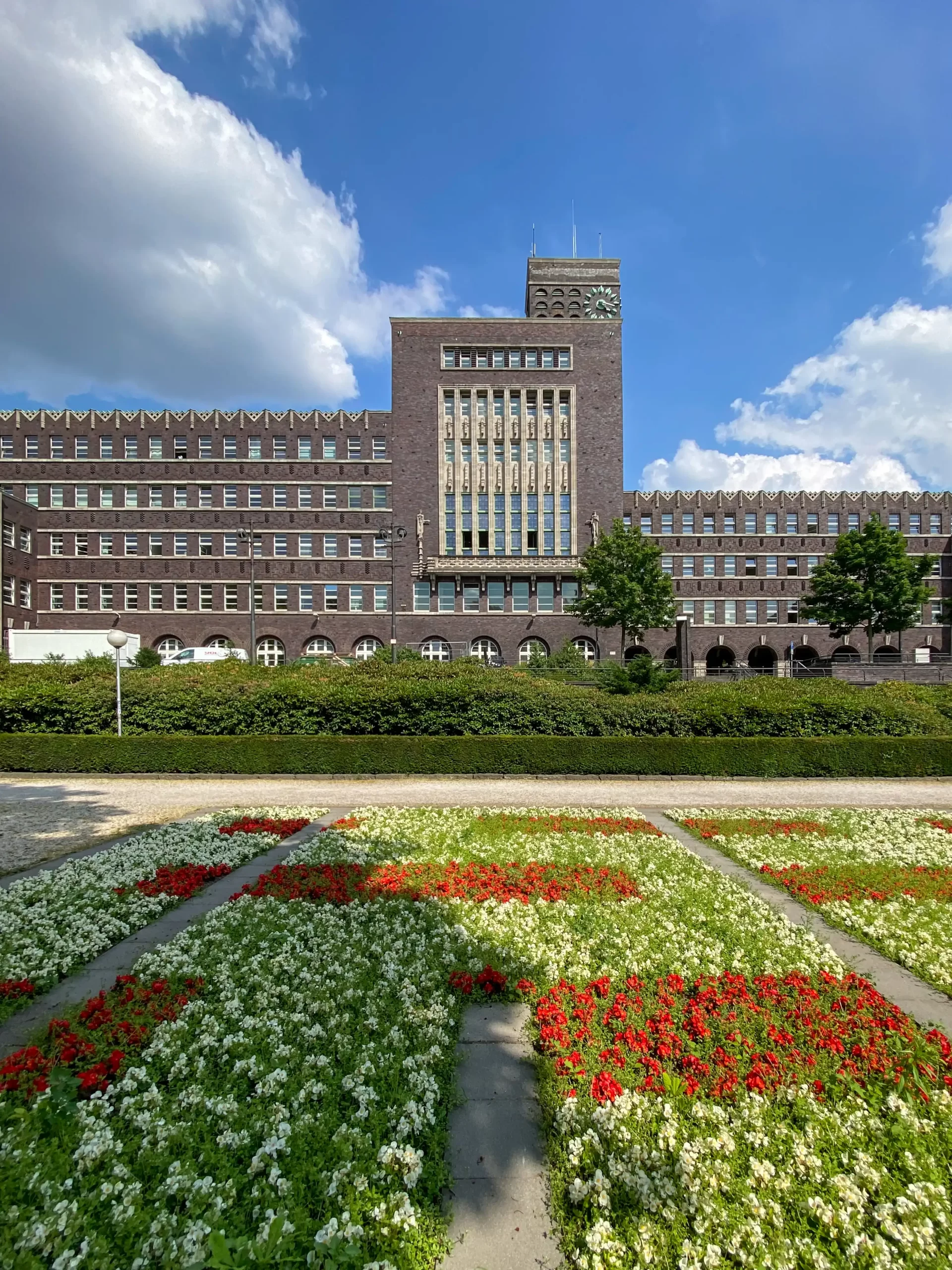
Oberhausen Town Hall, 1927-1930. Architects: Ludwig Freitag, Eduard Jüngerich. Photo: Daniela Christmann
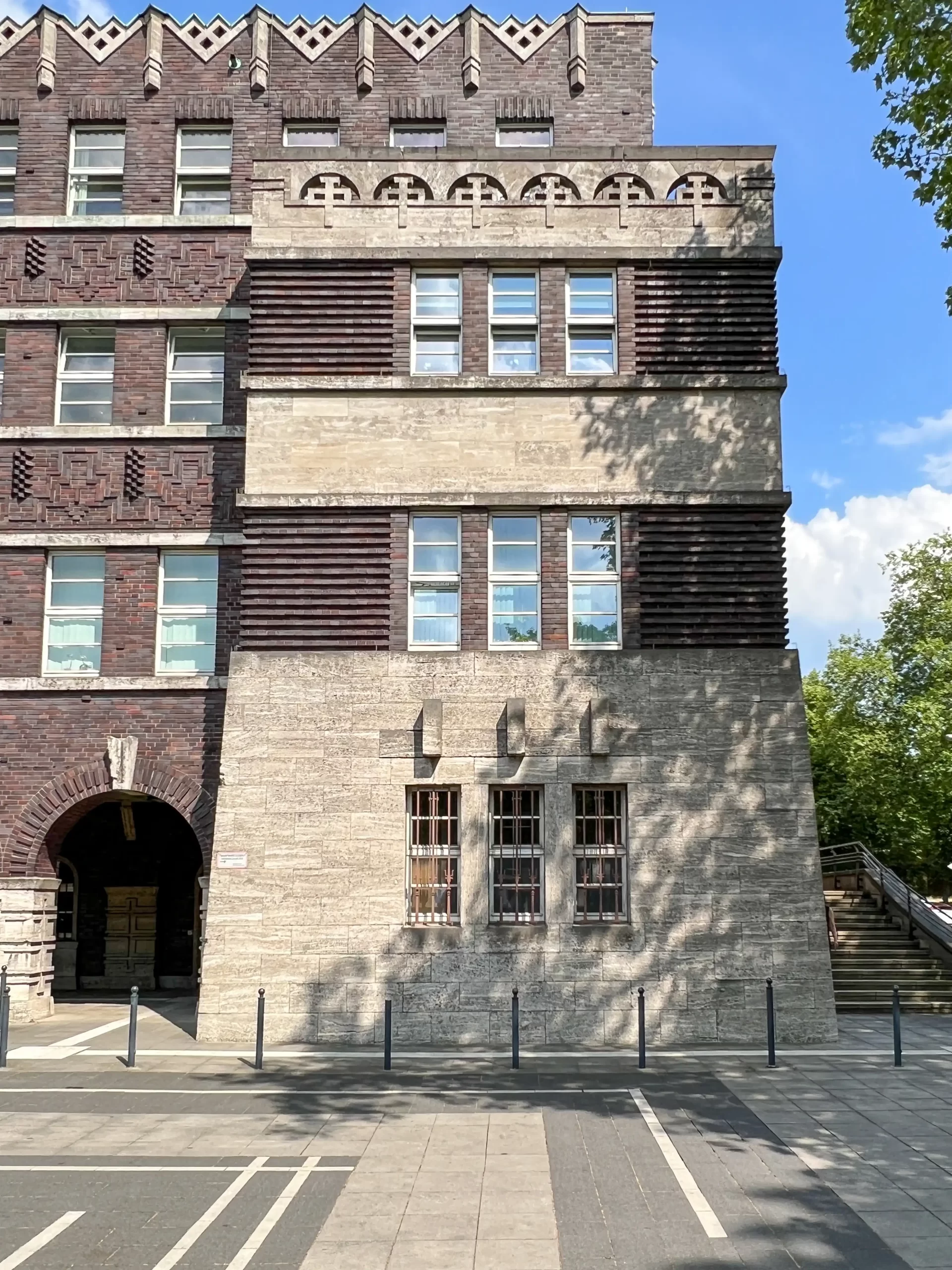
Oberhausen Town Hall, 1927-1930. Architects: Ludwig Freitag, Eduard Jüngerich. Photo: Daniela Christmann
1927 – 1930
Architects: Ludwig Freitag, Eduard Jüngerich
Schwartzstrasse 72, Oberhausen, Germany
Oberhausen’s City Hall was completed between 1927 and 1930 according to the plans of Ludwig Freitag, head of the city’s construction department, and Eduard Jüngerich, technical deputy.
Previous Building and Competitions
The original Town Hall was built between 1873 and 1874 on what later became Schwartzstrasse, but after a few decades the three-story building could no longer meet the needs of the rapidly growing city.
From the beginning of the 20th century, there were plans to build a larger town hall in the immediate vicinity of the old one.
Friedrich Pützer‘s design emerged as the winner of an architectural competition held in 1910. Ludwig Freitag had worked on this design in Pützer’s studio and had come to Oberhausen’s building department through his mediation.
However, Pützer’s design for the new town hall was not realized. The First World War delayed its realization.
After Pützer’s untimely death in 1922, the plans disappeared into a drawer and the city was initially satisfied with an extension to the old city hall, the so-called “temporary building”.
New Building 1927
Mayor Otto Havenstein and his technical deputy Eduard Jüngerich insisted on the idea of a new building.
After councillor Jüngerich presented a new design for the town hall in 1927, Freitag, as head of the building department, was also asked for a design.
On the basis of this design, which was based on Pützner’s preliminary studies, Freitag was commissioned with the execution and asked to take into account the suggestions from Jüngerich’s contribution as far as possible.
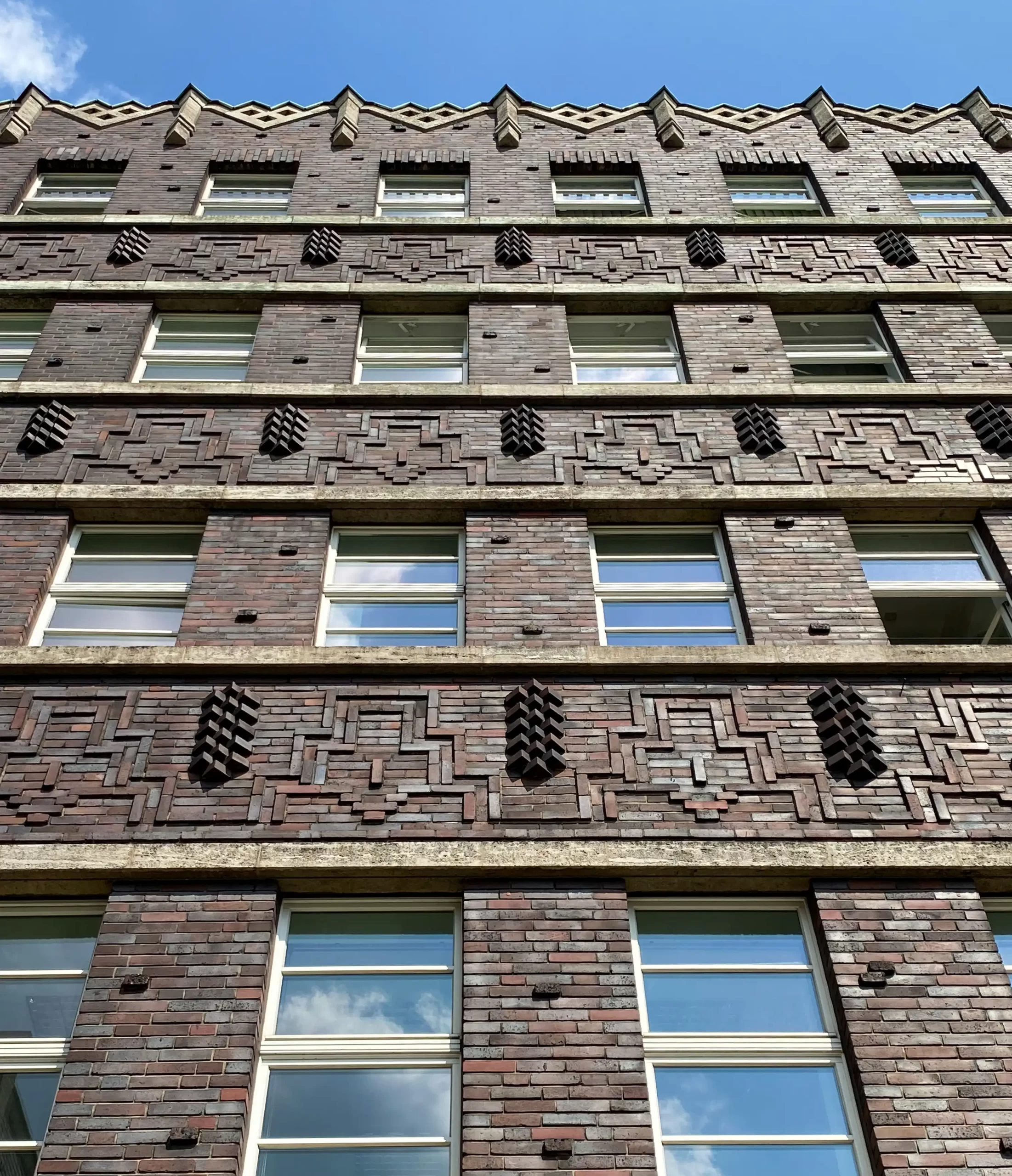
Oberhausen Town Hall, 1927-1930. Architects: Ludwig Freitag, Eduard Jüngerich. Photo: Daniela Christmann
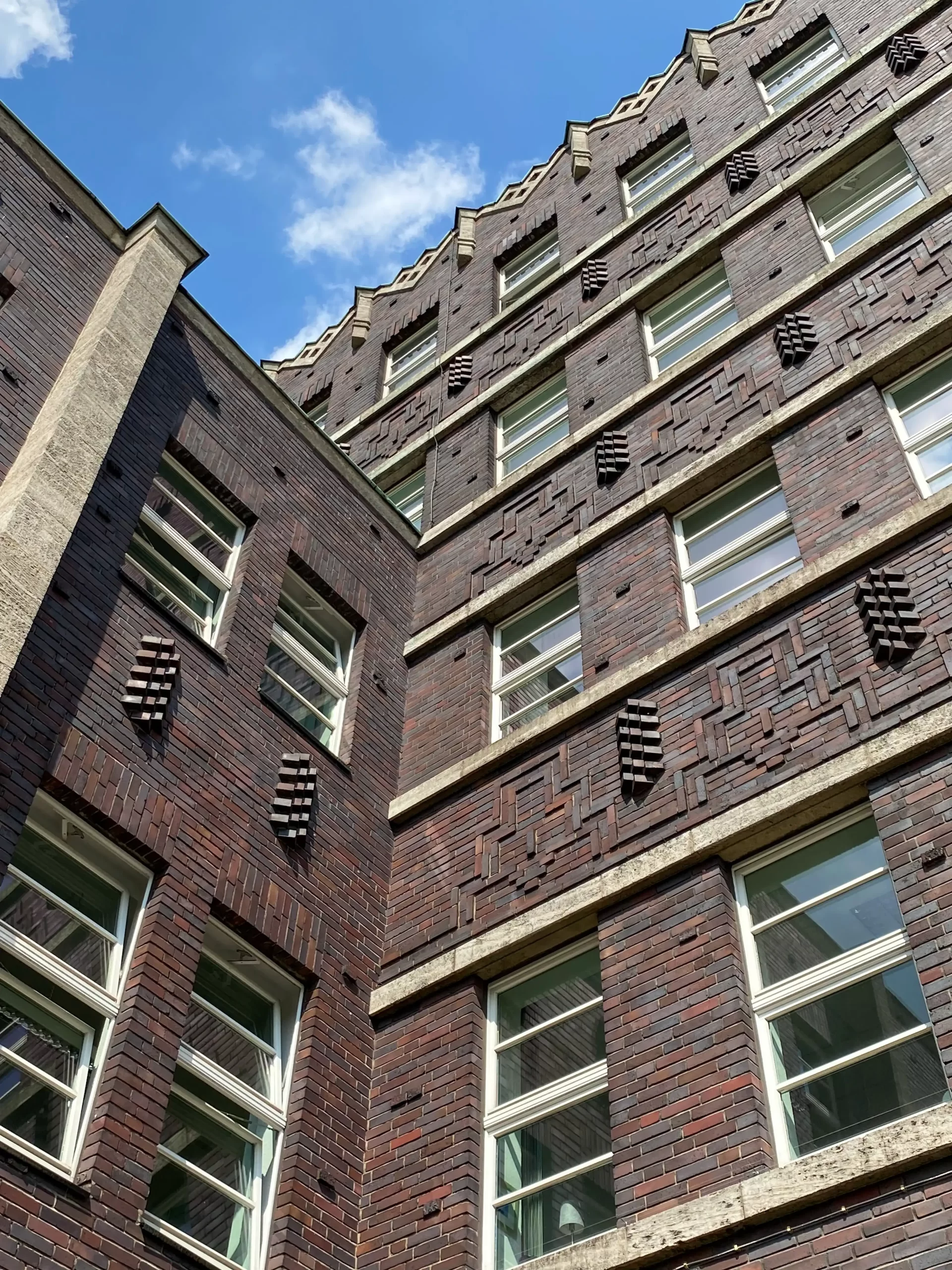
Oberhausen Town Hall, 1927-1930. Architects: Ludwig Freitag, Eduard Jüngerich. Photo: Daniela Christmann
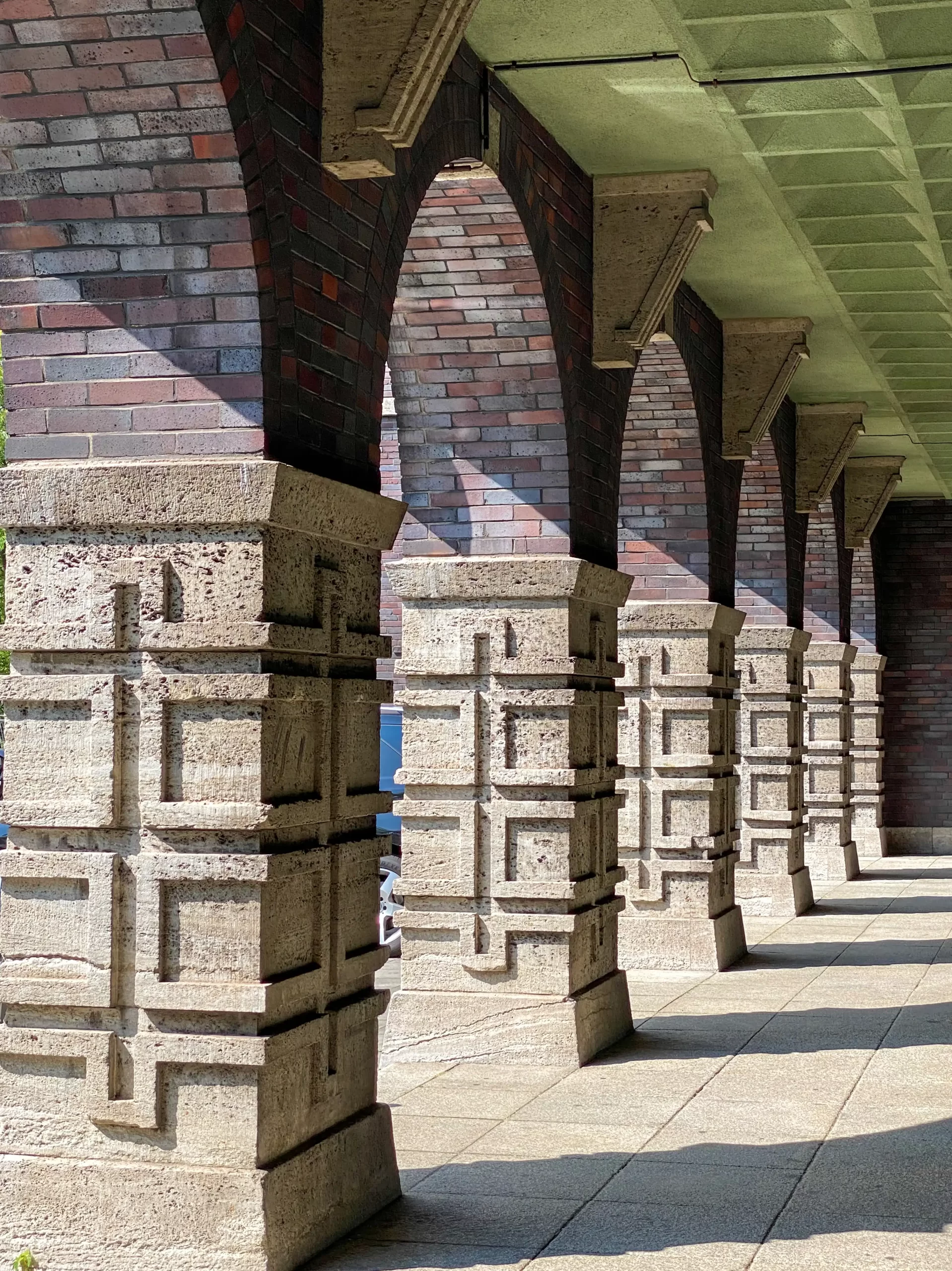
Oberhausen Town Hall, 1927-1930. Architects: Ludwig Freitag, Eduard Jüngerich. Photo: Daniela Christmann
Construction and Completion
This time the construction was done quickly. The topping-out ceremony was held on October 15, 1928. The building, completed in March 1930, was inaugurated on May 20, 1930, during a special session of the city council.
Wilhelm Heuser, the first mayor of Groß-Oberhausen, which had been formed the previous year by the merger of Sterkrade and Osterfeld, was also inaugurated on this occasion.
The main façade, about 100 meters wide and facing west, overlooks the Grillopark below, to which the Town Hall is connected by terraces and stairs.
Building Structure and Facade
When construction of the City Hall began in 1930, all the design elements of the previous decade were revisited.
The building volumes are reduced to simple stereometric cubes, while the decorative elements clearly reflect the representative aspirations: the ribbon-like row of windows with horizontal bands of shell limestone emphasizes the horizontal layering of the floors and frames the figurative motifs of the brick decoration in the parapet area.
The parapet zone is broken up by shell limestone lattices with triangular tracery. Filigree columns symbolically emphasize the seating area.
The central block with the clock tower and the windows of the meeting room protrude from the 103 meter long façade. By reducing the individual structures to simple cubes, the spatial effect is reminiscent of Peter Behrens‘ Gutehoffnungshütte.
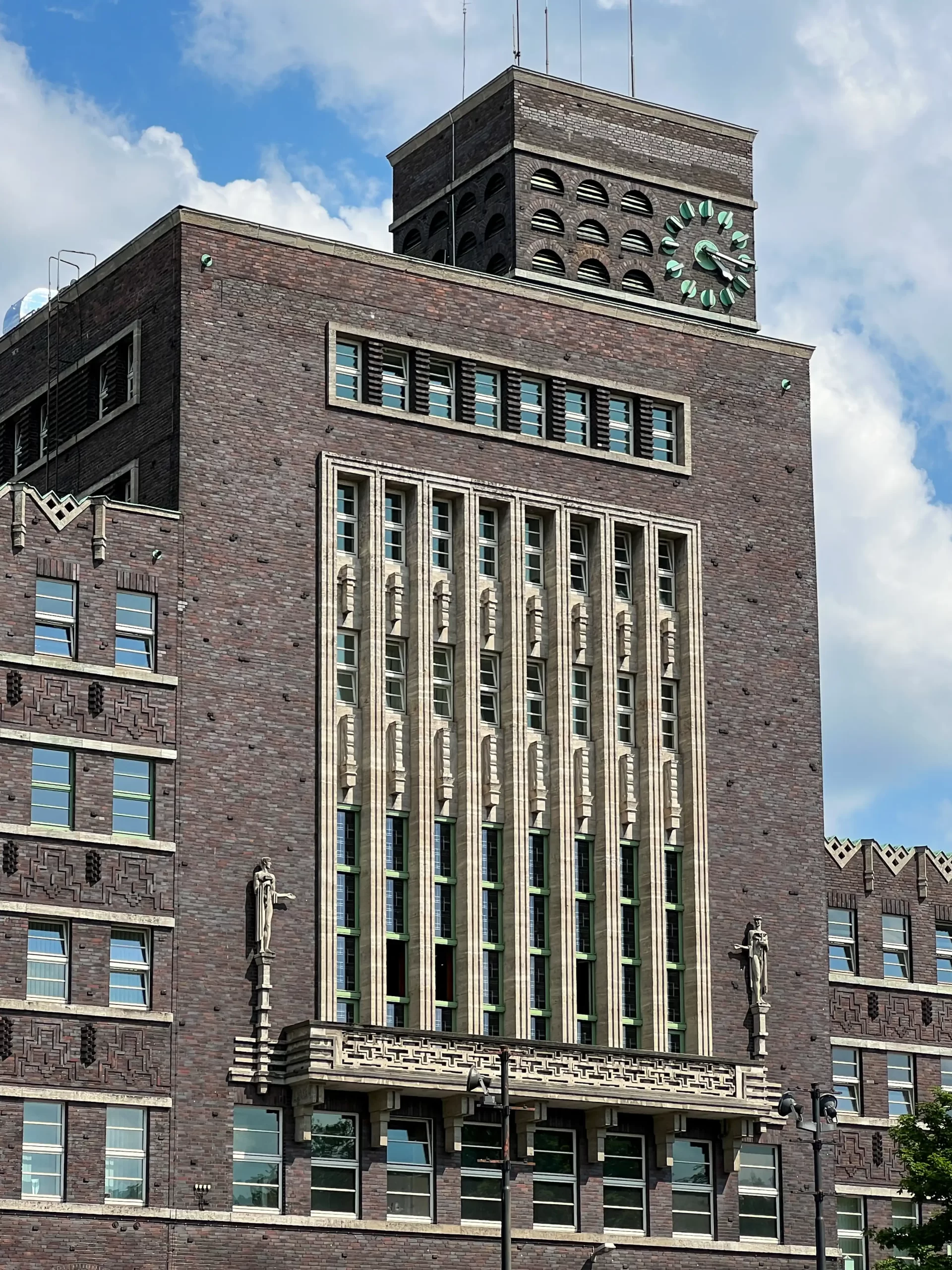
Oberhausen Town Hall, 1927-1930. Architects: Ludwig Freitag, Eduard Jüngerich. Photo: Daniela Christmann
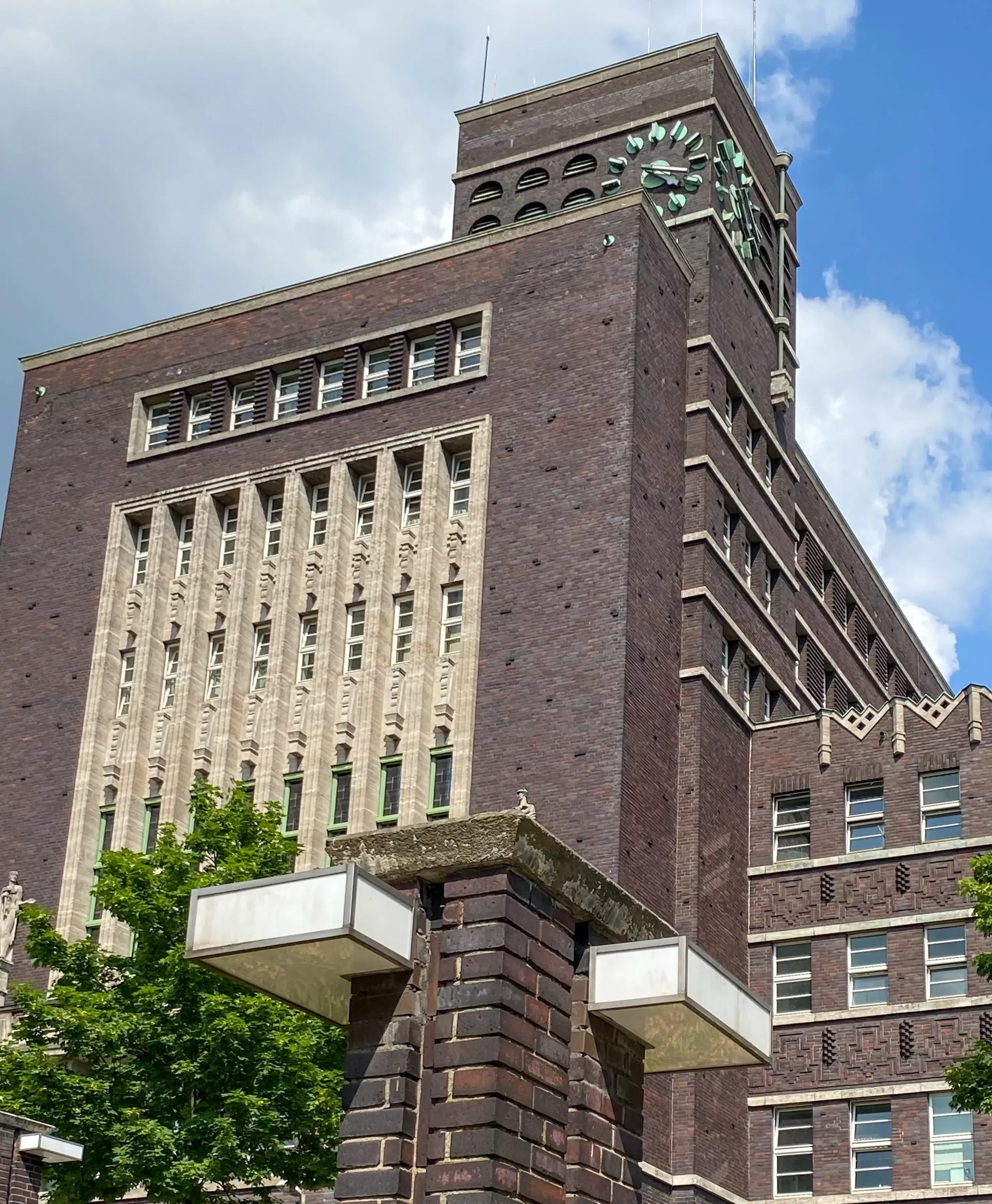
Oberhausen Town Hall, 1927-1930. Architects: Ludwig Freitag, Eduard Jüngerich. Photo: Daniela Christmann
Decoration and Interior
The façade is broken up by arcades, windows and the wide balcony of the Council Chamber, flanked by two shell limestone figures by sculptor Adam Antes.
At the south portal, there were two sculptures by Leopold Fleischhacker, which were destroyed during the Second World War.
Inside, elaborate marble trim and colored ceramic surfaces accent the doors and wall bases.
The building’s paternoster elevators are still in use today.
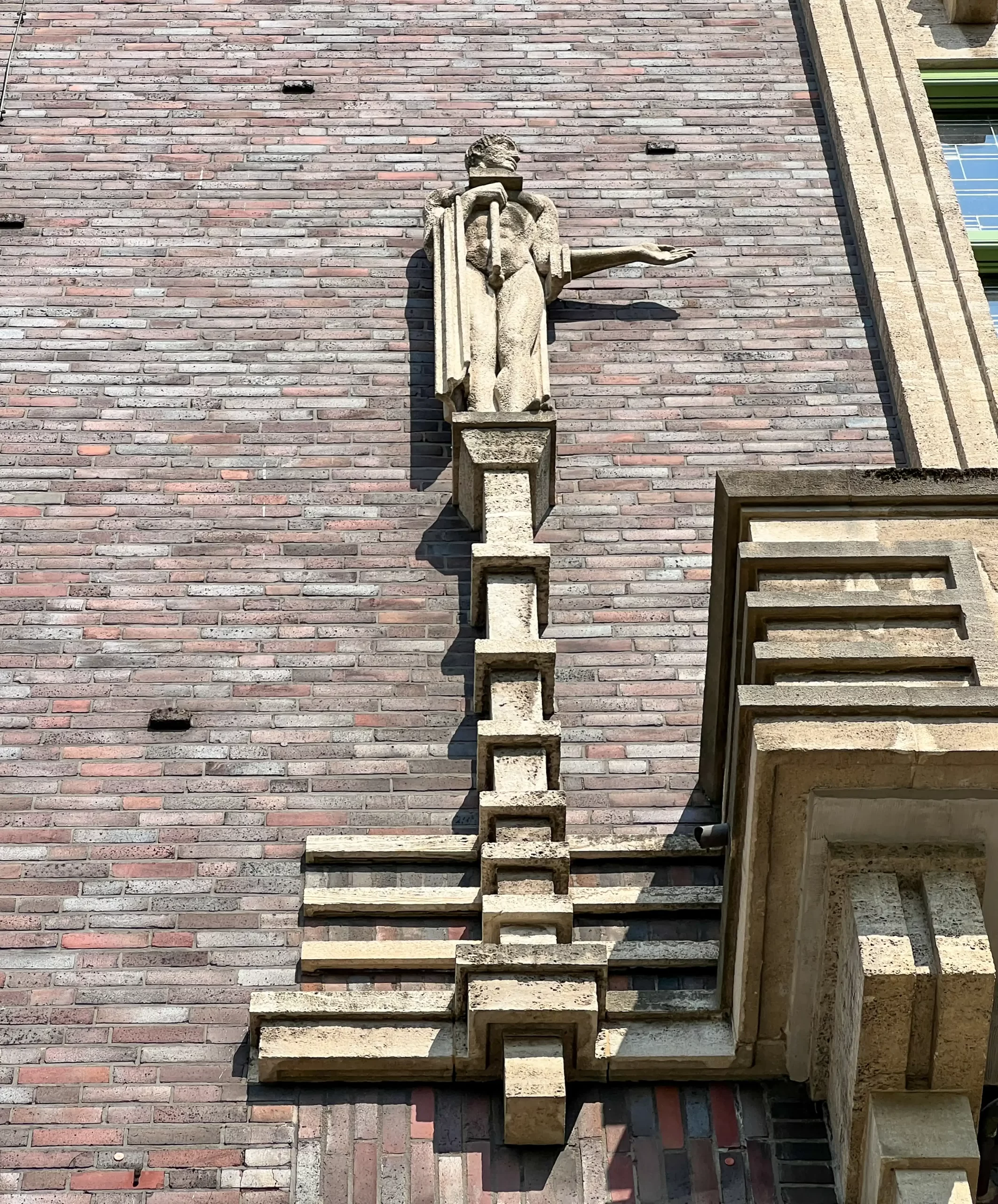
Oberhausen Town Hall, 1927-1930. Architects: Ludwig Freitag, Eduard Jüngerich. Photo: Daniela Christmann
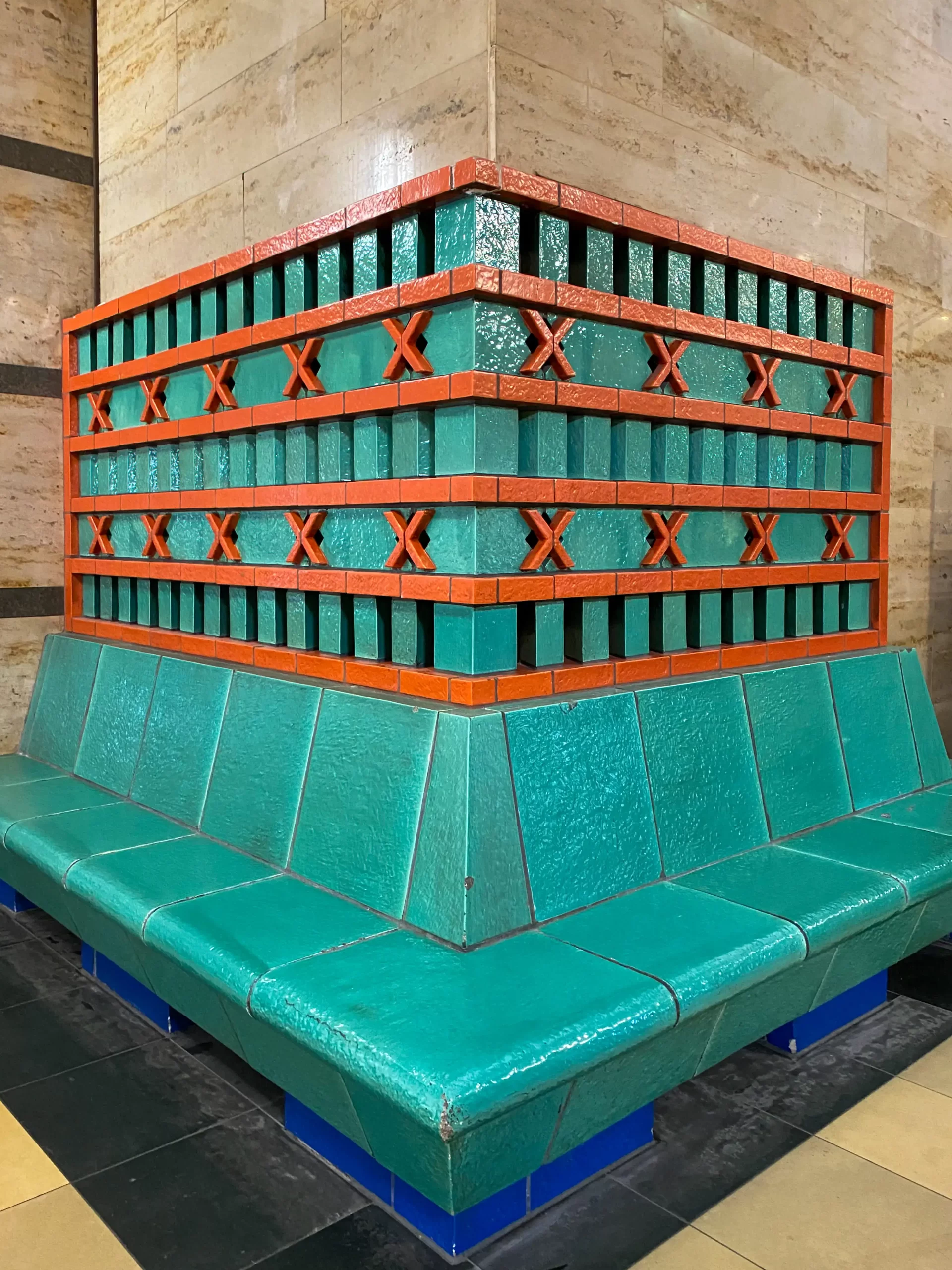
Oberhausen Town Hall, 1927-1930. Architects: Ludwig Freitag, Eduard Jüngerich. Photo: Daniela Christmann
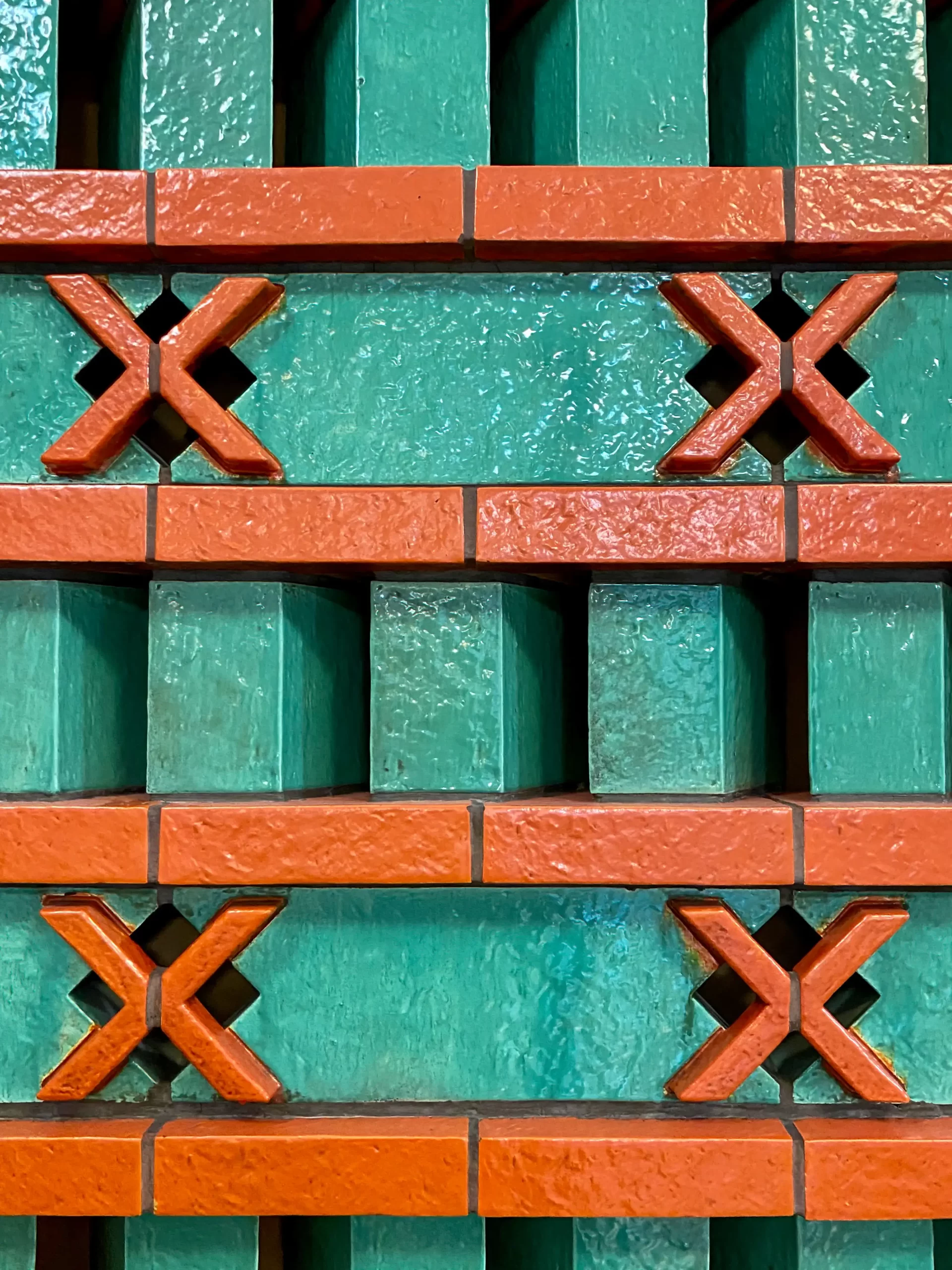
Oberhausen Town Hall, 1927-1930. Architects: Ludwig Freitag, Eduard Jüngerich. Photo: Daniela Christmann
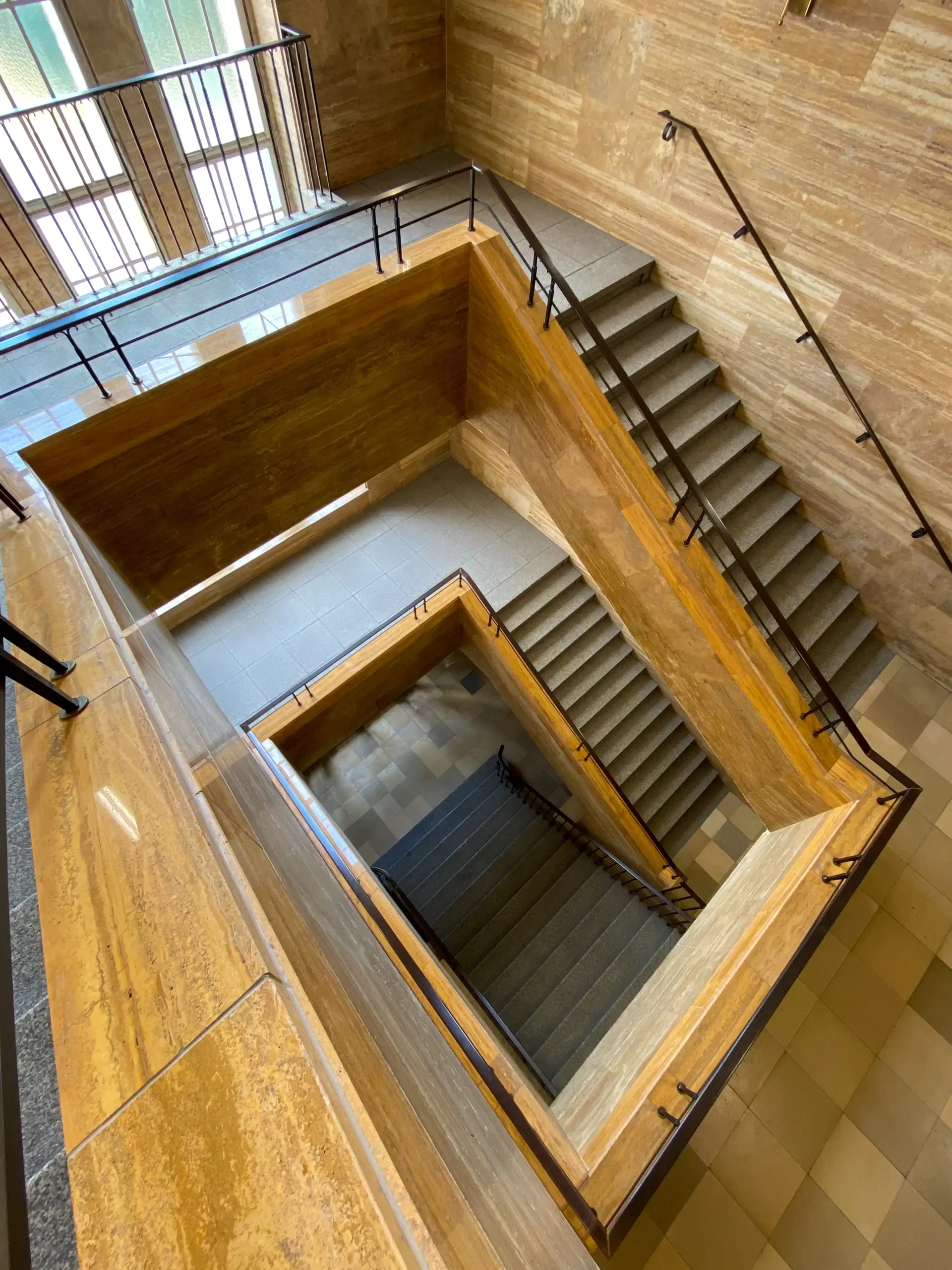
Oberhausen Town Hall, 1927-1930. Architects: Ludwig Freitag, Eduard Jüngerich. Photo: Daniela Christmann
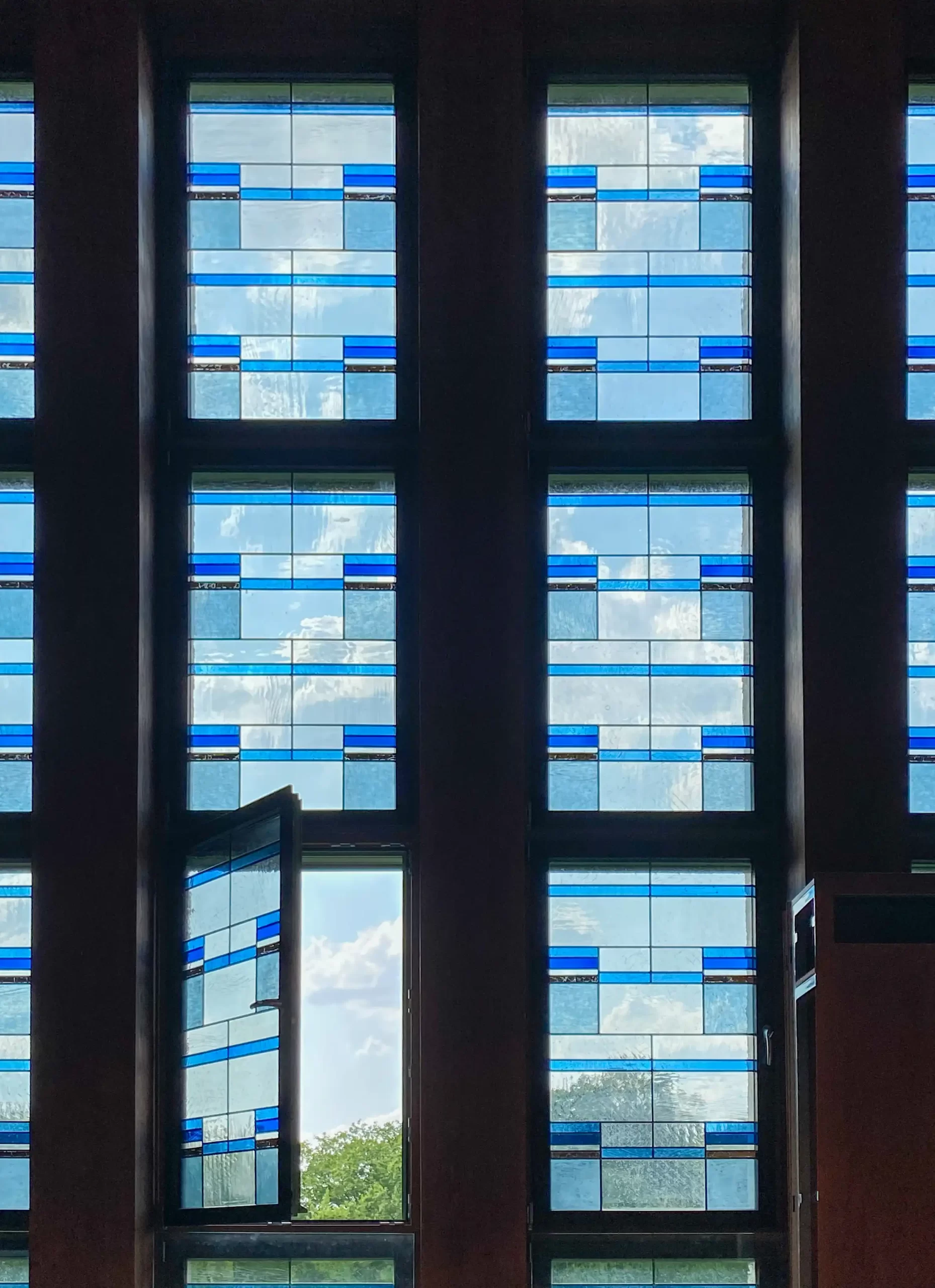
Oberhausen Town Hall, 1927-1930. Architects: Ludwig Freitag, Eduard Jüngerich. Photo: Daniela Christmann
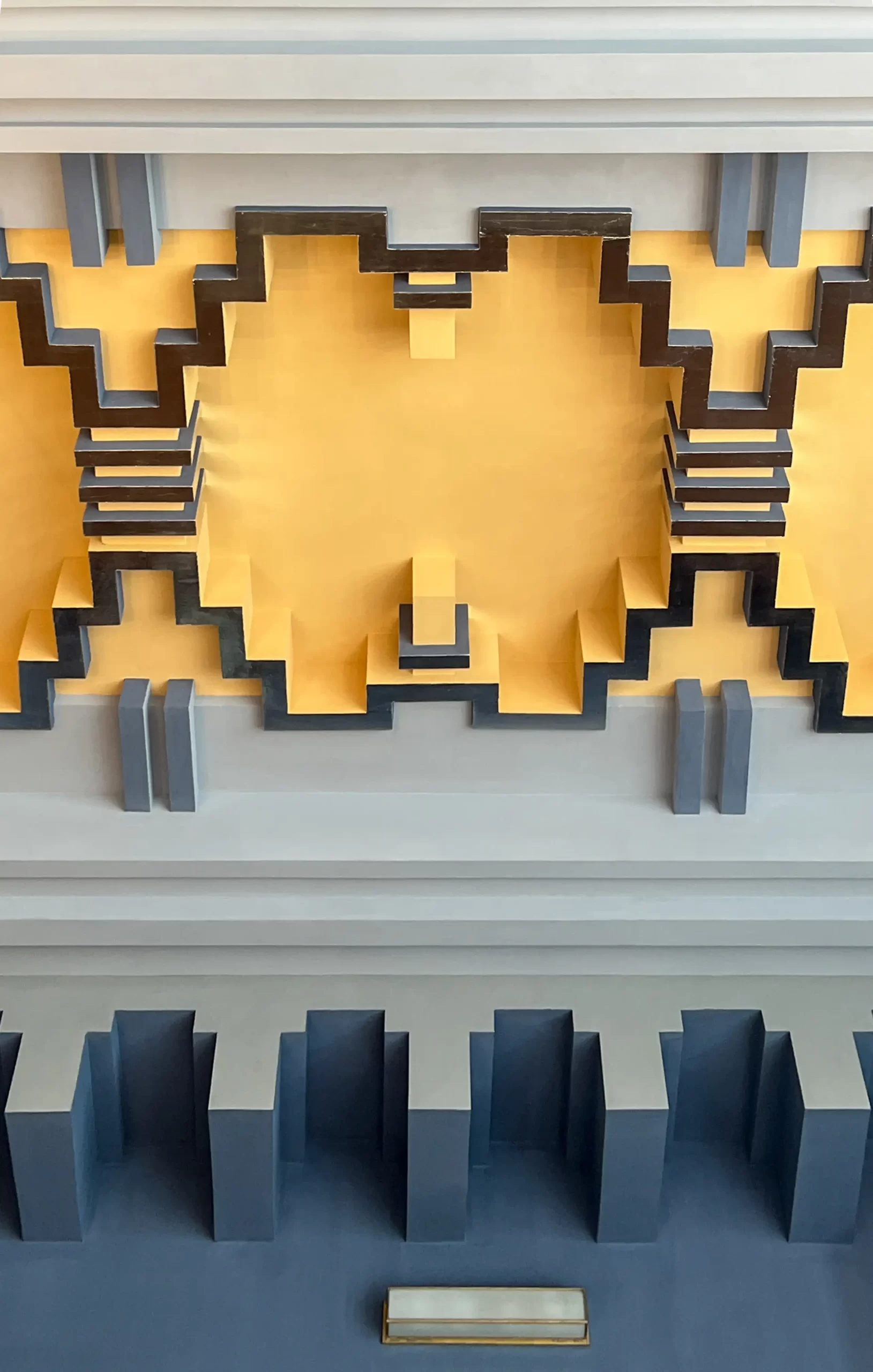
Oberhausen Town Hall, 1927-1930. Architects: Ludwig Freitag, Eduard Jüngerich. Photo: Daniela Christmann
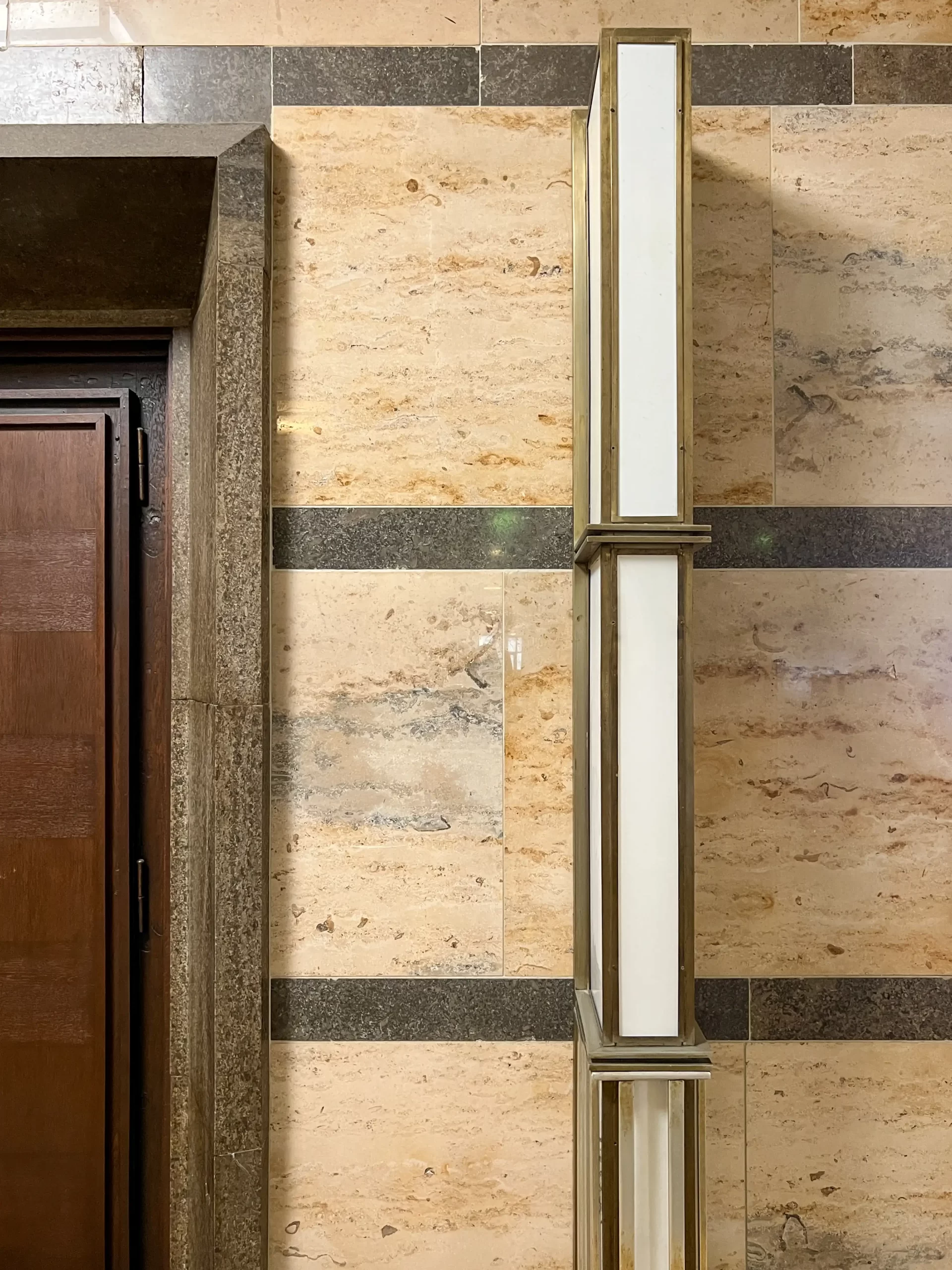
Oberhausen Town Hall, 1927-1930. Architects: Ludwig Freitag, Eduard Jüngerich. Photo: Daniela Christmann
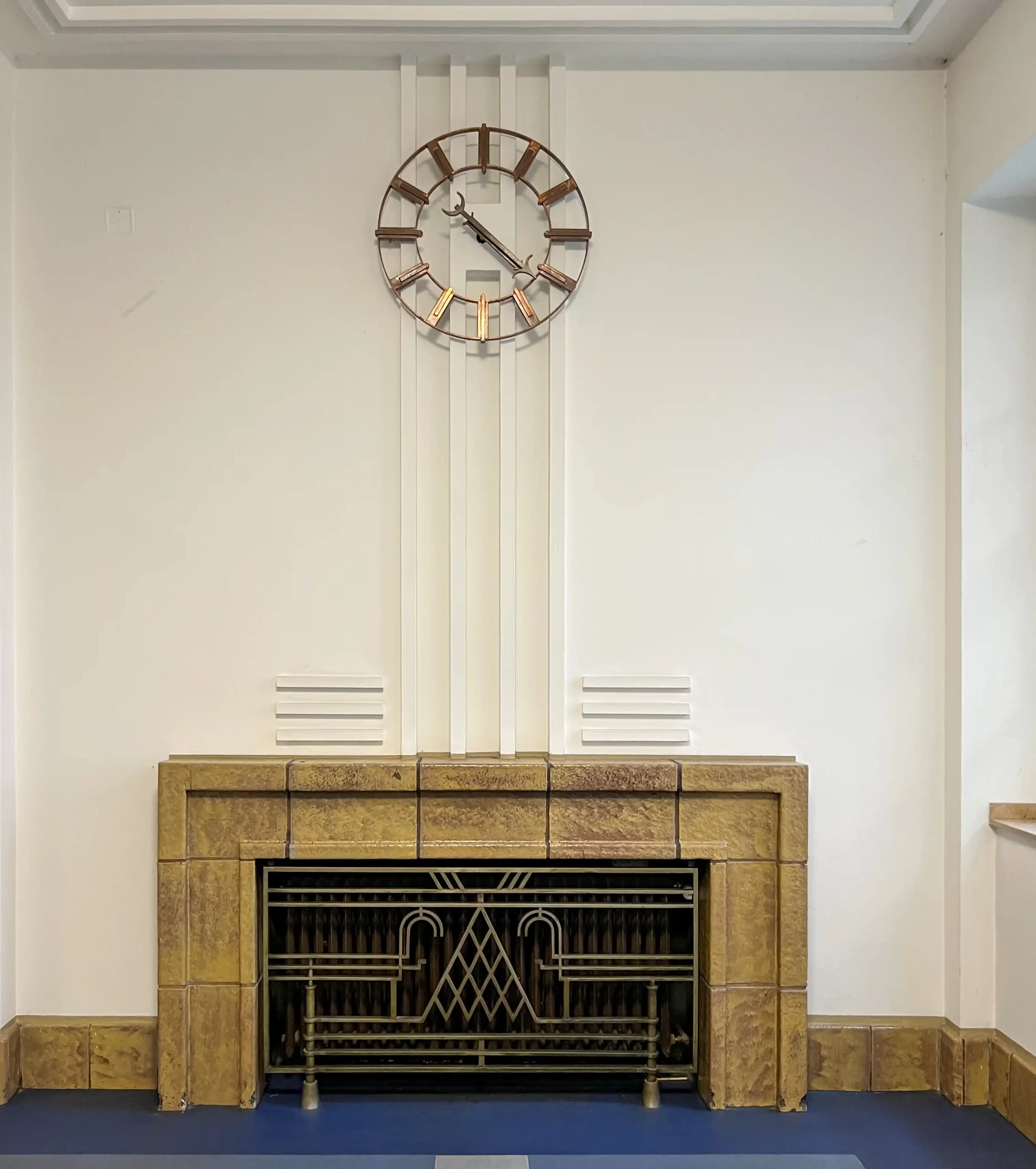
Oberhausen Town Hall, 1927-1930. Architects: Ludwig Freitag, Eduard Jüngerich. Photo: Daniela Christmann
Renovation
In 2000, the technical departments and offices were moved to the so-called Technical Town Hall, a former administrative building of the Gutehoffnungshütte in the Sterkrade district.
As part of the 75th anniversary of the city of Groß-Oberhausen, the Grillopark was restored to its original state in 2004.
The stucco ceiling with beaten aluminum and the stained glass windows of the meeting room on the second floor were preserved in their original state and uncovered and restored in 2023.

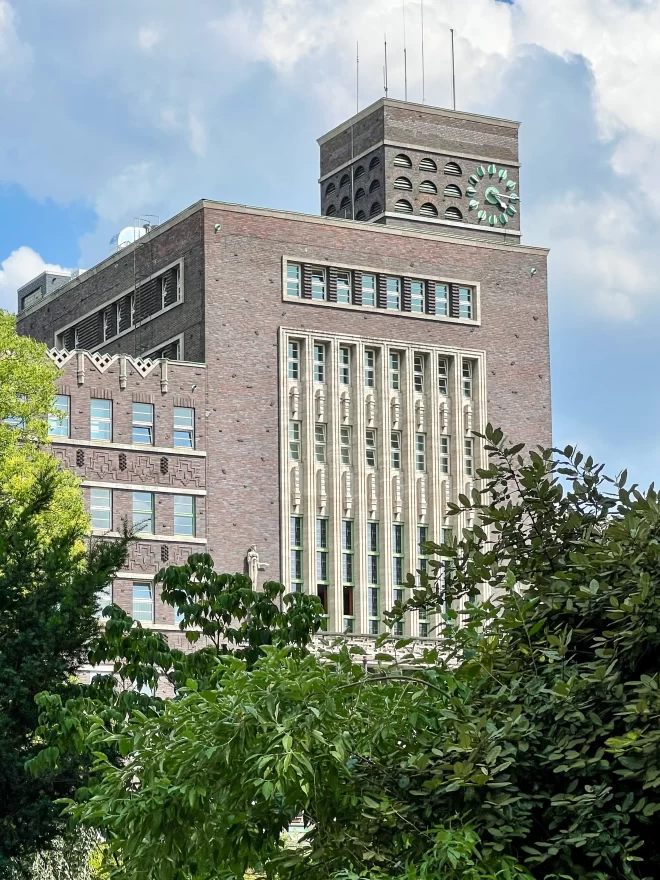 Rathaus Oberhausen, 1927-1930. Architekten: Ludwig Freitag, Eduard Jüngerich. Foto: Daniela Christmann
Rathaus Oberhausen, 1927-1930. Architekten: Ludwig Freitag, Eduard Jüngerich. Foto: Daniela Christmann